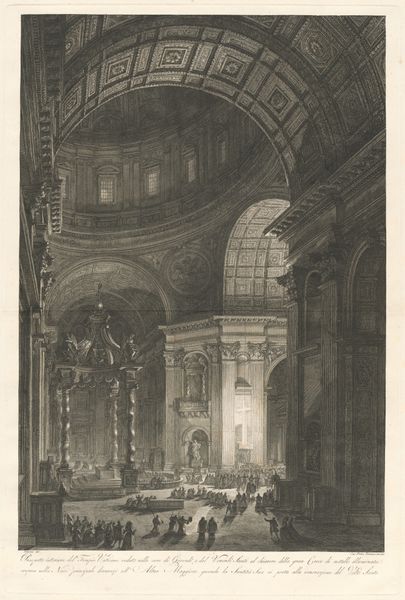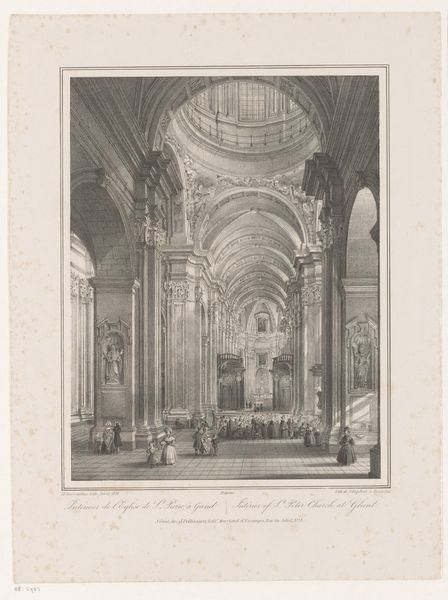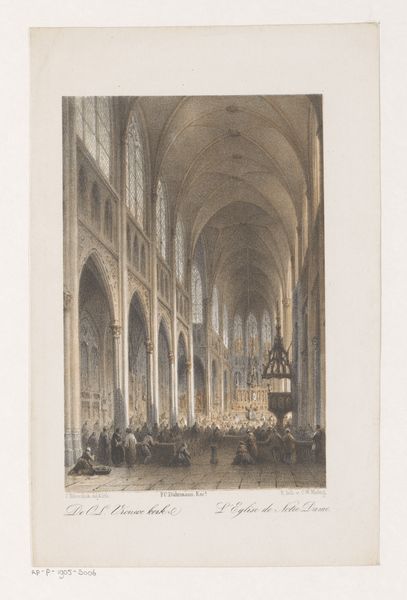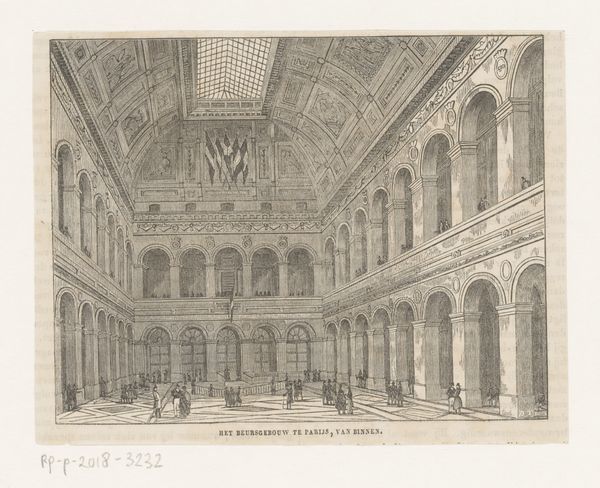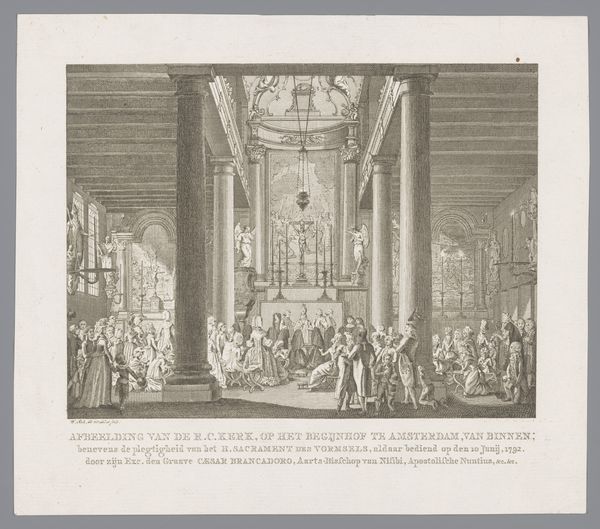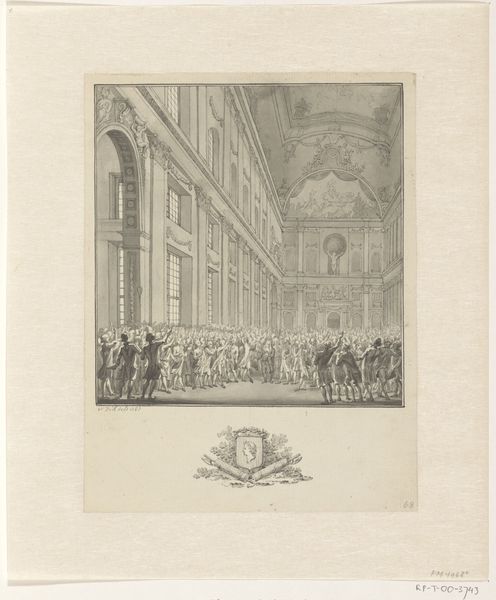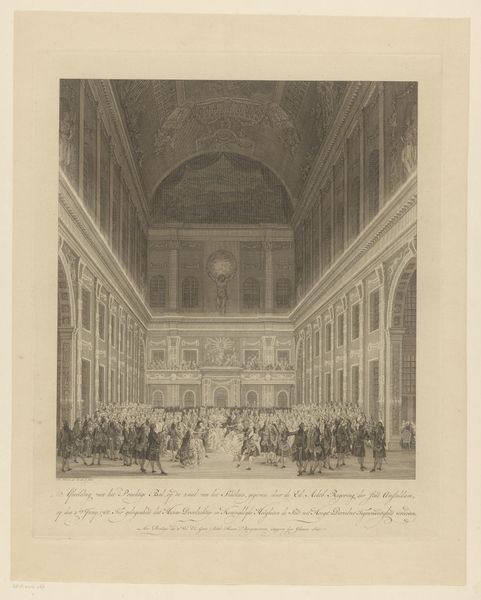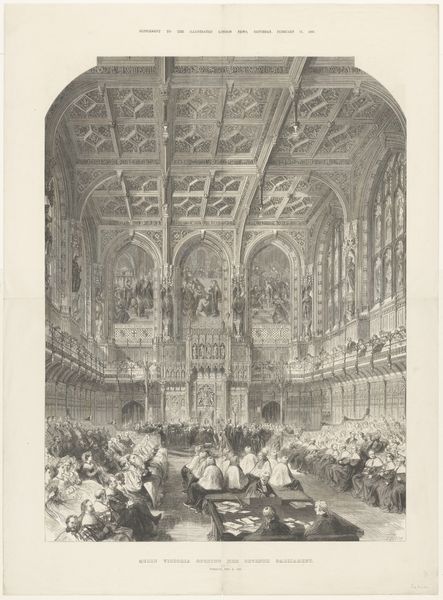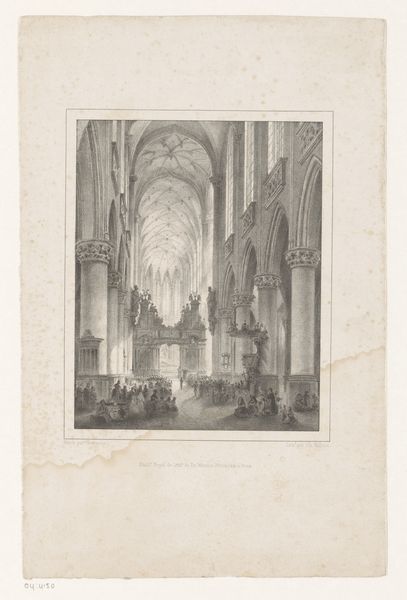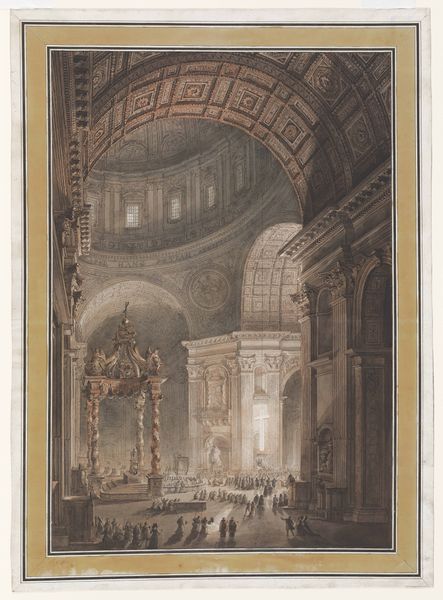
De Inwijding van het Paleis voor Volksvlijt (16 Augustus 1864.) 1864 - 1865
0:00
0:00
Dimensions: height 204 mm, width 146 mm
Copyright: Rijks Museum: Open Domain
Editor: Here we have a print entitled “De Inwijding van het Paleis voor Volksvlijt (16 Augustus 1864.)” made around 1864-1865 by an anonymous artist. It depicts the Palace of People's Industry in Amsterdam and is surprisingly detailed, considering it’s an engraving. I am curious about how its cultural context affected its form; what’s your interpretation of this work? Curator: As a materialist, I see here more than just a historical record. Look closely at the production. The very act of creating such a detailed print, disseminated to a wide audience, reveals a striving to democratize images, to document, to popularize what would be an elitist event and space. Editor: Democratize images, how so? Curator: The engraving, as a medium, lends itself to mass production and affordability. Consider the labor involved: the engraver's skill, the printer's craft, and the network of distribution. This image became accessible to a broad public far removed from the Palace itself. How do you think this affected their understanding of "progress" as showcased at the Palace? Editor: That's a perspective I hadn’t considered; I was really just admiring the architectural rendering. I now see it as propaganda almost, promoting a certain vision of industry available to those who couldn't attend. Curator: Precisely! The print itself is a product of industry, celebrating its own means of production. So the content and making is deeply entwined. It prompts us to consider the artist as laborer, the act of image-making as a form of work, and the print as a commodity in circulation. Editor: This reframes the whole building’s inauguration. Focusing on the material helps to grasp the intentions, even biases, behind the print. Thanks! Curator: The medium always carries part of the message. Looking closer at those processes uncovers layers of meaning within a work of art.
Comments
No comments
Be the first to comment and join the conversation on the ultimate creative platform.
